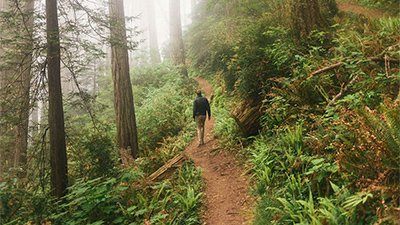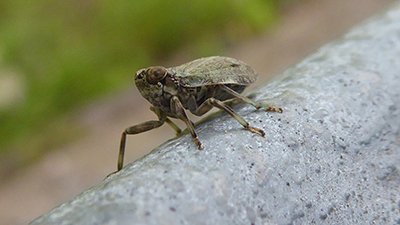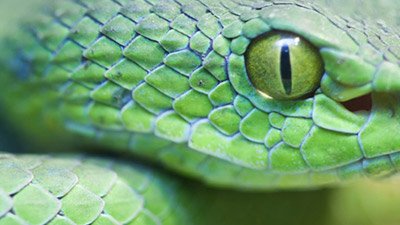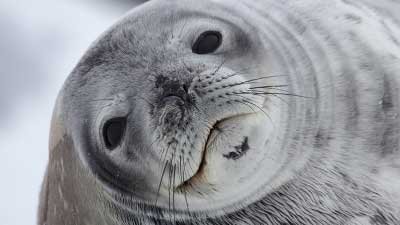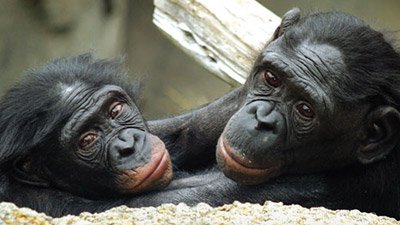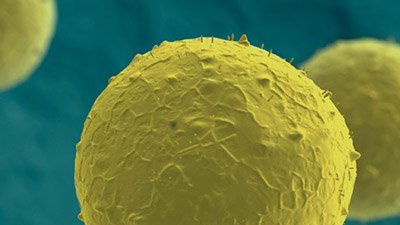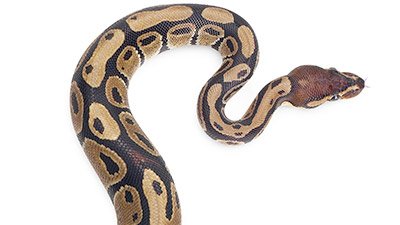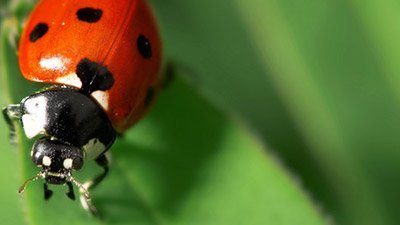Design in Nature
Sixth Senses in Animals
Our five senses cannot detect everything. The world is full of information beyond our reach, but many animals have “sixth senses”—super senses that enable them to experience other dimensions of our world. These bonus senses help these creatures survive and thrive in their habitats.
Amazing Design in Cells
If our genes and cells arose randomly through competition for supremacy, then how can we explain so many wonderful processes where cells are programmed to sacrifice themselves for the good of the whole, especially during development?
Divinely Designed Defenses
The defense mechanisms of just about every group in the animal kingdom could provide us with a lifetime of enjoyable study. It appears that these abilities were genetically present in the original creatures, but activated after Adam sinned, when God cursed the creation.
Horse Leg Bones
At first glance, horse legs appear to be poorly designed. Taking a closer look at the equine leg bone, however, scientists have discovered unexpected features that give it amazing strength and may inspire new engineering ideas.
Articles About Design in Nature
-
Oct. 26, 2025 from Answers Magazine
Nature reveals so much more about God’s character than a few hints we might easily overlook.
-
Jan. 1, 2025 from Answers Magazine
Metallic nodules on the ocean floor are found to produce their own oxygen. Despite evolutionists’ wishful thinking, these nodules are a nod to the Creator.
-
Jan. 4, 2024 from Answers Magazine
God made his handiwork so clear that even a child can see it (Romans 1:18–20). The beauty of his work is inescapable—and an undeniable witness to his existence.
-
April 6, 2021 from Answers in Depth
Cambridge researchers discovered functioning mechanical gears in juvenile leafhoppers as “training wheels,” showing that God created gears long before humans.
-
Oct. 18, 2020 from Answers Magazine
We’ve all heard about “the five senses”—sight, taste, touch, smell, and hearing. But are there other ways to experience the world?
-
March 6, 2016 from Answers Magazine
God designed a clever coat of insulation that makes life a breeze for animals that call the arctic their home.
-
Magazine Department ArticleColors on Our Creator’s CanvasJan. 1, 2016 from Answers Magazine
God brushed the canvas of His creation in colorful strokes that could only have come from His hand.
-
May 28, 2015 from Answers in Depth
Bioluminescence helps many animals hunt, hide, or reproduce, and it remains a riddle for evolutionary scientists.
-
The Evolutionary Problem of Feedback MechanismsDec. 26, 2014
One of the things that becomes a total contradiction to the proposition of biological evolution is the reality of feedback.
-
In-Depth ArticleCaffeine: Convergently Evolved or Creatively ProvidedSept. 20, 2014 from Answers in Depth
Did caffeine evolve again and again or did our Common Designer provide many plants with the genes to make it?
-
In-Depth ArticleRun For Your Life! Evolution’s SolutionAug. 8, 2014 from Answers in Depth
Good designs last, evolutionists conclude, but where did they come from in the first place?
-
Semi-Technical In-Depth ArticleThe Wonderfully Made Design of the Skin and Its MicrobiomeJuly 16, 2014 from Answers in Depth
Microbes live in a mutualistic relationship with the human body, make up the human microbiome, and play a role in our health by modulating the immune system.
-
In-Depth ArticleHow the Scorpion Got Its StingFeb. 3, 2014 from Answers in Depth
A genetically engineered toxin is said to show how scorpions evolved.
-
Magazine Department ArticleGear UpJan. 1, 2014 from Answers Magazine
The journal Science reported in September the discovery of the first mechanical gears to be found in a living organism.
-
Research PaperLife Lessons Illustrated in the Animal KingdomDec. 31, 2013 from News to Know
In 2013, it seems that animals—ever a prominent theme for evolutionary biologists—have proven a marvelous showcase for God’s designs.
-
God’s Perfect Creation Included CaffeineMarch 23, 2013 from News to Know
If like millions of other people you find that caffeine in your coffee, tea, or cola seems to improve your day, you’re not alone.
-
Nov. 25, 2012 from Answers Magazine
You don’t have to travel far to enjoy a getaway that will also build your biblical worldview.
-
Nov. 18, 2012 from Answers Magazine
Taking a closer look at the equine leg bone, scientists have discovered unexpected features giving amazing strength and may inspire new engineering ideas.
-
Jan. 11, 2012 from Answers Magazine
If our genes and cells arose randomly through competition for supremacy, then how can we explain so many wonderful processes where cells are programmed to sacrifice themselves?
-
Oct. 23, 2011 from Answers Magazine
Everything in God’s creation was originally “very good,” but now many microbes cause disease and death.
-
Oct. 16, 2011 from Answers Magazine
If God made a perfect world, where did harmful abilities come from?
-
Aug. 22, 2011 from Answers Magazine
Snakes are killing machines.
-
Them Bones, Them Thigh BonesMarch 12, 2011 from News to Know
What amazing structure is strong yet lightweight? And just as importantly, who was the designer?
-
-
Trio of Design RemindersJune 27, 2009 from News to Know
Three stories this week provide salient reminders of the design apparent in creation—whether it be in structures we’re just beginning to understand, or in engineers taking cues from nature to construct their machines.
-
June 7, 2009 from Answers Magazine
The Curse ushered in a brutal world of animals hunting and killing each other to survive.
-
The D(esigned)-WordMay 9, 2009 from News to Know
An element of nature “designed”—a slip-up or a rare admission?
-
A Fly’s Nervous System Aids in FlightAug. 2, 2008 from News to Know
No wonder houseflies can be so difficult to target: their guidance-control systems are sophisticated enough that they may inspire improvements to control systems in autonomous air vehicles.
-
The Gecko Tail and Its FeatsMarch 22, 2008 from News to Know
Regardless of the attention given to those clingy gecko feet, gecko tails play an important role in keeping the mobile little creatures agile.
-
Admitting DesignFeb. 26, 2008
Kenneth Miller, a Brown University cell biologist and professing Catholic who is one of evolution’s most vocal defenders, says it’s time for evolutionists to “reclaim the language of ‘design.’”
-
Tortoise Shell Rights ItselfNov. 3, 2007
Everyone knows that tortoises aren’t exactly nature’s most agile creatures. The plodding manner of the reptiles is fabled, and we haven’t heard of any arrests for illegal tortoise fighting.
-
Amazing Design: Scuba SpidersSept. 1, 2007
A unique type of spider that spends its entire life underwater uses silk to spin personal “scuba tanks” for various purposes, including oxygen supply.
-
-
Bat Wings: Efficiency in MotionJan. 20, 2007 from News to Know
The second of three design-in-nature articles this week highlights the amazing flight maneuvering capabilities of bats.
-
Technical Research PaperPreliminary Observations of the Pygidial Gland of the Bombardier Beetle, Brachinus sp.April 1, 2003, pp. 95–102
In this study the pygidial gland and nozzle of one species of Bombardier Beetle is studied under light and electron microscopy (SEM and TEM) and are shown to be quite complex.
-
Magazine ArticleGod’s Amazing GlueMarch 1, 2002, pp. 27–28
It’s only when our technology begins to get close to God’s that we start to understand the “marvellous” designs that He has used!
-
Magazine ArticleElectrical design in the human bodyDec. 1, 1999, pp. 43–45
In the last century, our society’s dependence on electricity and all the devices associated with it has grown phenomenally.
-
Magazine ArticleBlown Away by DesignSept. 1, 1999, pp. 14–15
Michael Denton’s book “Evolution: A Theory in Crisis” has exposed thousands to the overwhelming scientific problems of Darwinian belief.
-
Magazine ArticleDazzling Design in MiniatureDec. 1, 1997, pp. 6–7
The cells of the human body can produce at least 100,000 different types of proteins, all with a unique function. The information to make each of these complicated molecular machines is stored on the well-known molecule, DNA.
-
Magazine ArticleMount Rushmore ... Evidence of DesignMarch 1, 1996, pp. 19–20
Mount Rushmore, in the Black Hills of South Dakota, USA, is a spectacular memorial to four United States Presidents: George Washington, Thomas Jefferson, Abraham Lincoln, and Theodore Roosevelt.
-
Magazine ArticleRotary EnginesDec. 1, 1992, pp. 23–24
Rotating devices, such as wheels, gears and rotary motors do not seem to feature in the natural world of living things. Evolutionists would claim that they know why.
-
Magazine ArticleDiscovering the Dolphin’s SecretMarch 1, 1992, pp. 24–25
When man discovered the dolphin’s secret, they tried to copy it! Such an ingenious design owes its origin to God, the Master Designer. The real patent belongs to Him!
-
Magazine ArticleNot of Cabbages and KingsMarch 1, 1991, pp. 18–20
Have you ever noticed that when one considers two apparently different items, any characteristics they do hold in common can also be found in a wide variety of other things?
-
Magazine ArticleHands and Evolutionary ProofSept. 1, 1990, pp. 9–10
Attempts to build better mechanical hands have shown experts how incredibly complex is the real human hand.
-
Magazine ArticleDesign—“Man Computerised Thermostat”Jan. 1, 1983, pp. 3–4
Man possesses a complicated temperature control system. It is in reality an automatic, computerised thermostat which works day and night to keep man’s body at approximately 36.8 C or 98.4 F.
-
Magazine ArticleThe Technology of FlightNov. 1, 1980, pp. 10–11
Many of our textbooks suggest that it is man’s superior intelligence which has enabled our species to modify the environment by technological innovations and so give us some control of our evolution.
Recommended Resources

Answers in Genesis is an apologetics ministry, dedicated to helping Christians defend their faith and proclaim the good news of Jesus Christ.
- Customer Service 800.778.3390
- Available Monday–Friday | 9 AM–5 PM ET
- © 2026 Answers in Genesis


